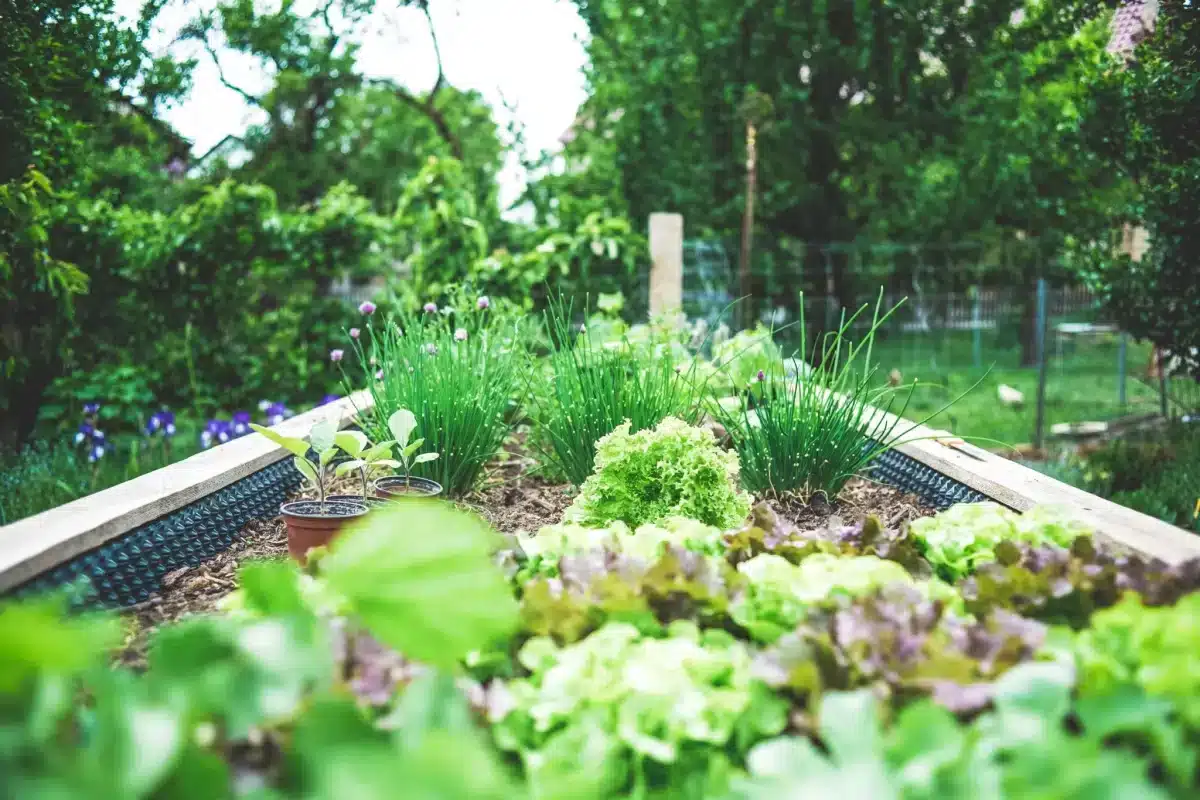“When building soil you not only improve your plants’ health, but you can also improve your own.”
- Author and respected gardener Frank Tozer
Welcome to Part 2 of “The Ultimate Guide to Growing in your Garden”. In this article, we’ve moved onto the next step in creating your home garden – preparing the soil.
Why is soil prep so important?
Healthy garden soil is essential for healthy plants. The same is true of domestic gardens as it is of large-scale farming operations: if your soil is rich and nutritious, you will have little need for inputs such as fertilisers and pesticides.
For plants to thrive, soil should be:
- Well aerated
- Loose and ‘fluffy’
- Rich in nutrients and minerals
- Rich in organic matter and humus
- Free draining
- Able to retain moisture.
Proper pH is also an essential characteristic of healthy soil.
Get to grips with your soil
When it comes to home gardening, there are two types of soil you need to know about:
- Topsoil: The uppermost layer of soil in a garden bed, typically darker than the subsoil found below it since it contains more organic matter and nutrients.
- Subsoil: Denser than topsoil, usually lighter in colour and cooler as it contains little organic matter and less air.
TOP TIP:
When you dig a hole, it’s advisable to separate the topsoil and subsoil so that you can replace them in the correct order when you fill the hole back up. If you neglect to do this, the beneficial micro-organisms found in the topsoil may die if buried too deep down.
Determine your soil type
Not all gardens are blessed with good soil, but this doesn’t mean that your soil can’t be improved! Read these tips on how to identify your soil type and make the necessary amends for a more bountiful veggie garden.
Loam
A gardener’s delight, loam is dark in colour with a good balance of silt, sand and clay. It has plenty of humus and ticks all the ‘good soil’ boxes. To maintain the quality of the soil, avoid over-cultivating it and keep it well mulched.
Sand
Sandy soils are typically light in colour and feel gritty to the touch. They don’t hold their shape and don’t hold water well. Sandy soils usually contain little organic matter and lack nutrients.
How to improve sandy soil:
- Dig in as much organic matter as possible to improve the soil’s texture, water-holding capacity and ability to retain nutrients.
- Feed sandy soils more frequently with small quantities of organic fertiliser.
- Give plants in sandy soil smaller quantities of water more frequently.
- Keep hydrophobic soils well mulched with wood chips, leaves, hay, straw or bark.
- If possible, grow cover crops and turn them into the soil in the spring.
Clay
Clay is heavy, smooth and often dark. It is made up of very fine particles with little air space in between. It is sticky when wet, but hard when dry, making it difficult to cultivate. Clay is also a cold soil that takes a while to warm up. On the plus side, clay is richer in nutrients than sand; it retains nutrients and holds water well.
How to improve clay:
- Dig in as much organic matter as possible in autumn to help bind the fine particles of the soil together.
- Keep a permanent mulch over the clay to increase organic matter and improve texture and nutrient density.
- Never walk on or dig wet clay; compacting it makes it solid and hard.
Improve soil pH
Soil pH measures a soil’s acidity or alkalinity.
Why is the correct soil pH important?
- Influences the availability of essential nutrients
- Affects the activity of soil microorganisms.
When starting a new garden, it’s advisable to check the soil pH to see if it’s suitable or needs to be adjusted.
< 5.6
May be too acidic.
> 6.4
You may need to acidify your soil.
A soil’s pH takes time to moderate, so there is no quick fix. However, adding plenty of organic material every year will help balance both acidic and alkaline soils.
Preparing your soil for your veggie garden
Critically important is to prepare your soil correctly right at the outset of establishing a garden, using all the advice and pointers in this blog. This literally creates the foundation for a successful home garden. Thereafter it is not necessary to disturb the soil any deeper than is required to plant your seed or seedlings. This correlates with what is an important facet of regenerative agriculture – the ‘no till’ method.
Once you have managed to improve your soil quality, you can prepare your soil for planting.
- Add a generous amount of organic matter (in the form of compost, manure and mulch) to your topsoil.
- Dig this in deeply (about 800mm) for best results.
- A 1-part compost to 1-part topsoil ratio works best for larger beds.
- Add organic mulches (straw, hay, grass clippings, shredded bark) which cover the soil, insulate it from extreme heat and cold, reduce water loss and deter the growth of weeds.
Recommended products for establishing your home garden:
From Zylem, NanoCal mixed with water as a suspension at the rate of 10gm/10L plus Sea Brix also diluted with water (100ml/10L) applied through a watering can – this rate is per square meter.
From Organic for Africa, compost is what would be used as a soil conditioner and for digging into beds – to improve hummus levels and microbial action. OFA compost is a balanced combination of composted and screened plant material, and animal manure.
TOP TIP:
Adding chemical fertilisers will only replenish certain nutrients; they do nothing to maintain good soil. Organic matter, on the other hand, is a long-term solution that will help supply everything your plants need.
MAKE YOUR OWN COMPOST
Simply pile brown layers (leaves, straw) and green layers (grass clippings, food waste) on top of one another. Turn the pile often and keep it moist.
Soil good to go? Read our blog next week to find out more about the next step in the process, choosing what to plant.
Although not (yet) packaged for domestic use, our Zylem products (such as Sea Brix°™ with a boost of Nutri-Tech Triple Ten™) would be a great asset to a home garden. Get in touch with the Zylem team to find out more. Contact us on 033 347 2893 or send us an enquiry.
About Organic for Africa
Situated in the beautiful KwaZulu-Natal timber growing countryside of Greytown, Organic for Africa produces a wide range of products from growing medium and compost to specifically screened seedling mixes, various mulches as well as customised and specific mixes. All products are sourced from all-natural and renewable resources and free from harmful bacteria and chemicals.

